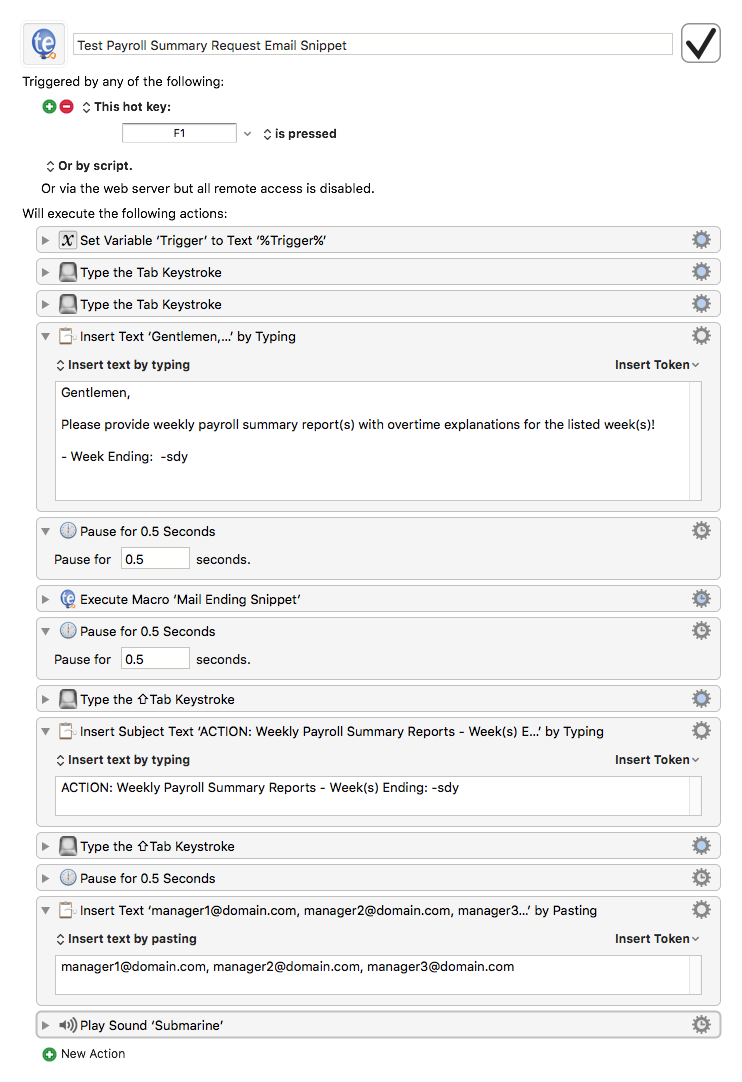

qqįor example, to record a basic macro that inserts a new line and save it to register a, use this sequence: qaoq To record a macro and save it to a register, type the key q followed by a letter from a to z that represents the register to save the macro, followed by all commands you want to record, and then type the key q again to stop the recording.

The basic workflow of a Vim macro consists of recording your commands and keystrokes while doing the edits required to solve the problem on the first line, saving the command sequence to a register, and then replaying the macro to do the same on the remaining lines. Let's use Vim macros to handle this task. To obtain the expected output, you need to edit the input by switching the position of some fields, deleting the quotation marks, and inserting Tab or comment characters ( #) appropriately. The original file is this: $ cat hosts.csv You want to convert it to the /etc/hosts format to enable local name resolution for the hosts. Suppose that you receive a CSV file containing a list of hosts in your network from a hypothetical monitoring system. In this article, we'll explore the concept of Vim macros by applying it to a practical example. Macros improve your workflow and are a great time saver. Macros make tedious and repeatable tasks manageable by executing the task only once, then using Vim's power to automate it. You then execute that macro many times to repeat the same job in an automated way. In Vim, a macro is a feature that allows you to record a sequence of commands that you use to perform a given task.

#Run macro keyboard word 2010 download
Download RHEL 9 at no charge through the Red Hat Developer program.


 0 kommentar(er)
0 kommentar(er)
